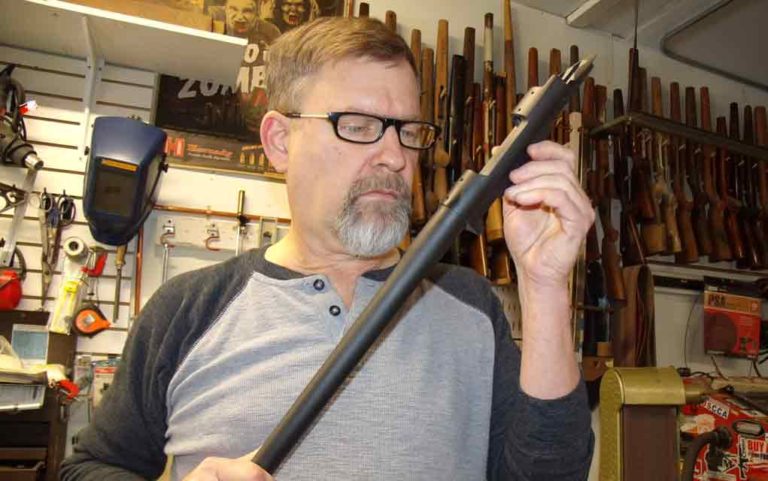
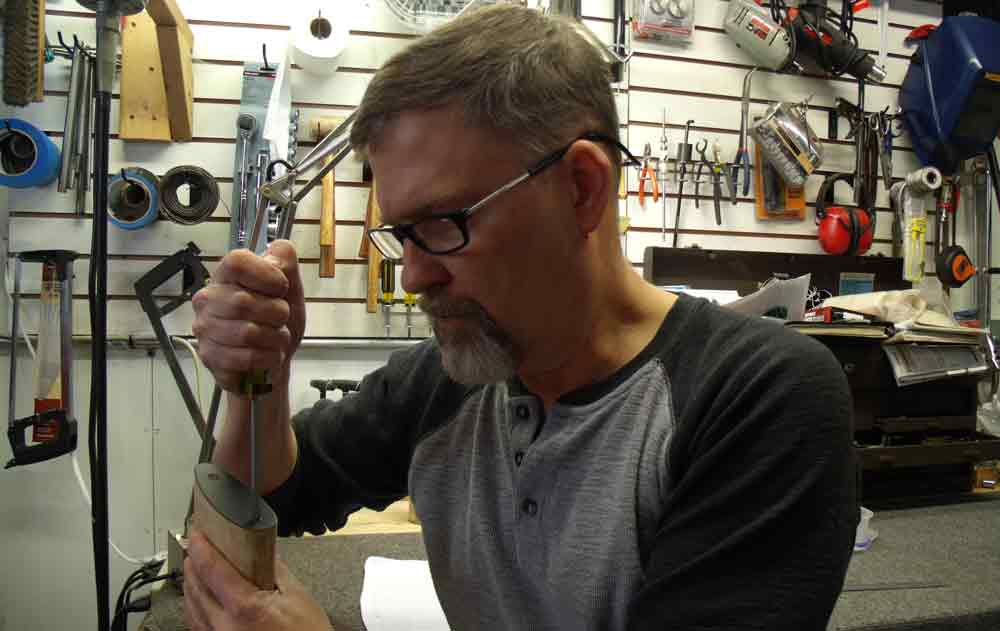
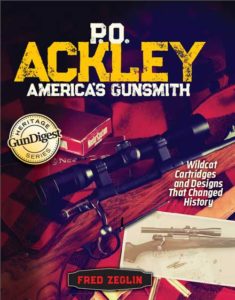
We talk with gunsmith and author Fred Zeglin on P.O. Ackley's incredible influence on the modern firearms world.
When it comes to P.O. Ackley, Fred Zeglin knows of what he speaks. The master gunsmith, gunsmithing instructor and author has spent the better part of his career studying the life and works of the firearms icon in one way or another. Whether tinkering on a rifle in his workshop, developing a new wildcat cartridge or expounding on the finer points of barrel reamers, Ackley has always been close at hand for Zeglin. In a way, Zeglin was able to repay the patron saint of firearms with his most recent book: P.O. Ackley: America’s Gunsmith. The riveting work not only looks at the many contributions Ackley made to the firearms world, but also the humble and unique man himself. We were lucky enough to catch up with Zeglin and talk a little Ackley with him. And after our interview, there is little doubt that few men have had the impact on the world of firearms like Ackley.
From John M. Browning to Charles Newton to Eugene Stoner, the firearms world is filled with characters that advanced the industry. What in particular drew you to P.O. Ackley as your subject?
First, I would argue that Ackley is equal in stature and contribution to all of those men. He did as much for cartridge development as Browning did for guns. Newton may have had equally good ideas, but it took a couple of generations for his ideas to catch on with the shooting public. Ackley was far more prolific in his work than Stoner. Ackley produced well over 100 cartridges. Beyond that, he designed and built machines for barrel making; gunsmithed; taught; made barrels, reloading dies; designed bullets; and finally, was a well-respected writer.
As a gunsmith turned writer myself, I felt a natural pull toward Ackley’s work. I started looking around and since his death in 1989, there have been a few small articles written about some of Ackley’s work. However, nobody had taken on the job of researching his entire career and reporting on it. It didn't take long till I was hooked on the story and just kept digging. Starting the process, I had no idea the time and effort I would spend to gather the information in this book, but I am proud of the end product.
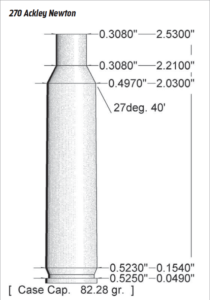
Your previous writing has dealt with Ackley. Was there anything new you learned about the man or his work in researching this book?
Quite a bit of what I found along the way is new and unreported prior to this book. The story of Ackley’s work at Ogden Arsenal during the war and who he worked with provides a web of contacts that shaped much of his later career. How the school in Trinidad (Trinidad State Junior College gunsmithing school) actually got its start was different than previously reported. The sale of P.O. Ackley Inc. and subsequent move to Salt Lake City tells a lot about Ackley as a business man. Like most subjects, the devil is in the details.
Much of what I learned was small facts that have been misreported in articles over the years. Even so, there are some pretty big stories that came to light. Not many people know about Ackley’s involvement with EMDEKO Inc. building production rifles. The development of the Ackley ACE Bullet design is one of those things that was almost lost to history. I collected more cartridge designs attributed to Ackley than have ever been reported and added as much pressure tested load data as I could lay my hands on. In short, absolutely there is new information in this book.
Ackley’s impact on firearms was vast — cartridge development, barrel making, custom rifles, writing. Having delved so deeply into his life and works, where do you feel he made his biggest impact?
Ackley’s biggest impact is without a doubt something that most people would never consider; he worked with and trained a huge number of gunsmiths and barrel makers. I would be willing to bet you could find Ackley's influence in most barrel companies in the U.S. But that’s not how the shooting public will remember him.
Ackley will always be remembered for Ackley Improved cartridges – mainly because shooters generally want a little more out of every gun they shoot. The concept of Improved cartridges as perfected and marketed by Ackley offers at least some benefit in nearly all cartridges, even if it’s only longer lasting brass. But for most shooters, it’s a little more velocity that they care about.
P.O. Ackley came along at just the right time. Powders were improving, case designs were becoming more modern in shape with less taper and sharper shoulder as Newton had envisioned decades earlier. He was brilliant in his design choices that allowed the average shooter to experiment with wildcatting. Improved cartridges allow the shooter to use factory ammo to fireform cases, so the need to understand headspace, or buy expensive forming dies is removed from the equation. You just have to learn to reload, and you’re ready to play with “Improved” cartridges.
Given your background as a gunsmith and working with wildcat cartridges, not to mention writing on Ackley, I have to suppose you’ve had extensive experience with his cartridges — improved or otherwise. Is there any particular one that stands out for you and why?
Wow, it’s really tough to narrow it down to just one. I would say that the best ones are the Improved cartridges that gain the most case capacity in fireforming. Cases like the .25-35 WCF, the Winchester .30-30, 7×57 Mauser and .257 Roberts would be at the top of my list. Over the years, I have built guns in most of Ackley’s Improved designs; none have ever disappointed.
Interestingly, many of the concepts of Ackley Improved have been adopted by the firearms industry as a whole. When new cartridges come to the market from any of the big gun making companies, they now sport minimum body taper and sharp shoulders right from the factory, proving P.O. had it right long before the rest of the gun industry.
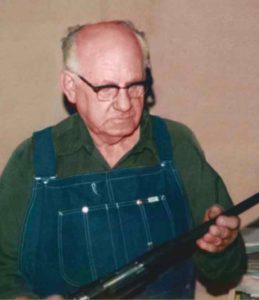
Personally, how has Ackley influenced your work in the gun industry — aside from giving you fodder for writing?
Well, I might never have taken up teaching about firearms and gunsmithing if it were not for Ackley. You might say his career path has turned into a challenge to me to try to keep up. Naturally, with my interest in wildcats, Ackley was an early source of information. He demonstrated the value of being scientific and analytical when experimenting. His writings gave me the desire to understand things, not just work with a monkey-see-monkey-do attitude.
As a result of researching this book, I have spoken to a number of guys who worked with or for P.O. Ackley at some time in his career. In the time since I started the research, many of these men have passed on. So the biggest influence that Ackley has had on me is the desire not to waste time, and to work at what I love.
One of Ackley’s contemporaries said, “He (Ackley) just did what he thought was interesting, and it turned out a lot of other folks thought it was interesting too.” Unwittingly, I have always followed that path as well and have been lucky enough to have clients who were interested in what I was doing.

Next Step: Get your FREE Printable Target Pack
Enhance your shooting precision with our 62 MOA Targets, perfect for rifles and handguns. Crafted in collaboration with Storm Tactical for accuracy and versatility.
Subscribe to the Gun Digest email newsletter and get your downloadable target pack sent straight to your inbox. Stay updated with the latest firearms info in the industry.

![Best Concealed Carry Guns In 2025 [Field Tested] Wilson Combat EDC X9S 1](https://gundigest.com/wp-content/uploads/Wilson-Combat-EDC-X9S-1-324x160.jpg)


![Best 9mm Carbine: Affordable PCCs [Tested] Ruger Carbine Shooting](https://gundigest.com/wp-content/uploads/Ruger-Carbine-Shooting-100x70.jpg)
![Best AR-15: Top Options Available Today [Field Tested] Harrington and Richardson PSA XM177E2 feature](https://gundigest.com/wp-content/uploads/Harrington-and-Richardson-PSA-XM177E2-feature-100x70.jpg)
